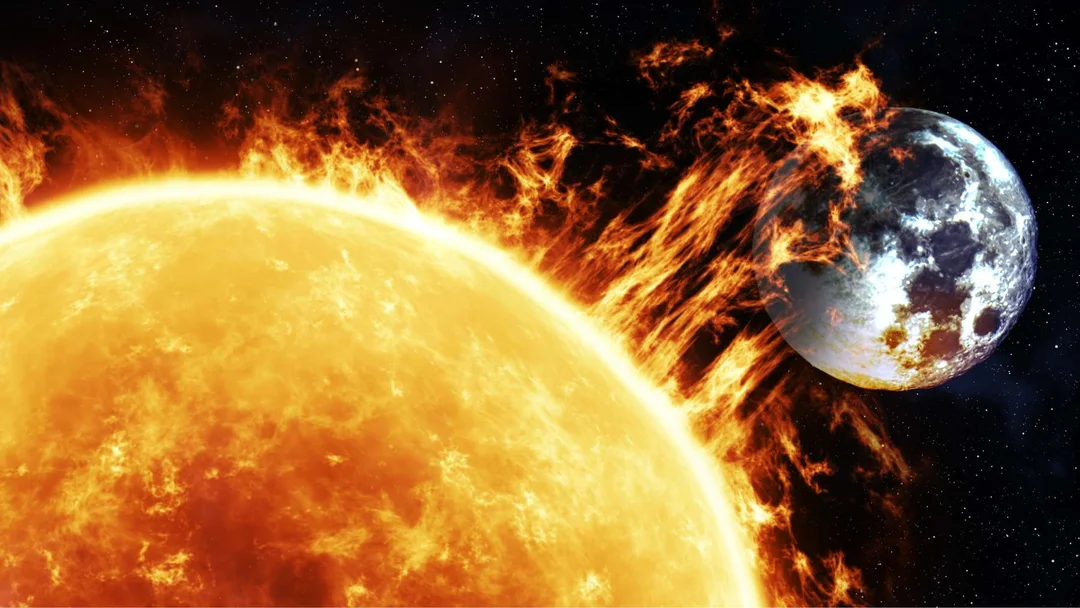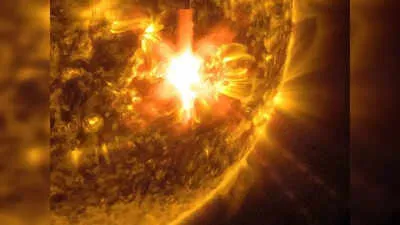
NASA Warns: Solar Flares Spark Communication Disruption Fears – An “Internet Apocalypse” on the Horizon?
Get ready for potential disruptions! NASA and other agencies are sounding the alarm about increased solar flare activity and its potential to wreak havoc on Earth's communication systems. The culprit? A particularly active sunspot region known as AR4087.
Recent reports highlight a concerning series of X-class solar flares – the most intense category – originating from AR4087. The first significant flare, an X1.2, occurred on May 13th. Just hours later, a more powerful X2.7 flare erupted, causing widespread radio blackouts across vast regions, including North and South America, Europe, Africa, the Middle East, and Southeast Asia. This highlights the immediate and tangible impact that solar activity can have on global communications infrastructure.

While these flares pose a threat, the good news is that Earth’s atmosphere and magnetic field shield us from the most dangerous particles. However, the flares can still severely impact satellites and anything relying on signals passing through the upper atmosphere, such as GPS and satellite phones. The energy from a flare travels at the speed of light, reaching Earth in about eight minutes, leaving little time for preparation.
Adding to the concern, a recent "Space Weather Tabletop Exercise" organized by FEMA and involving numerous agencies, simulated a devastating "solar superstorm" scenario. This hypothetical event resulted in a nationwide blackout of the internet, widespread power grid failures, transportation breakdowns, and surging fuel prices. Crucially, the exercise revealed significant gaps in understanding, coordination, and response procedures among participating agencies.
One of the biggest challenges identified was the extremely short warning time – a mere 30 minutes – before a coronal mass ejection (CME) impacts Earth. The Space Weather Operations, Research, and Mitigation (SWORM) task force emphasized that "space weather is a complex subject, and its potential impacts are not well understood outside of NOAA and NASA."
To improve solar storm preparedness, SWORM recommends increased investment in monitoring technologies, enhanced interagency cooperation, and public awareness and education. They also stress the importance of establishing formal protocols and conducting frequent simulation exercises.
While the prospect of an "internet apocalypse" may sound like science fiction, the potential for significant disruption from solar flares is very real. NASA warns that even stronger flares than those observed could occur, exceeding the capabilities of current sensors, with the most powerful solar flare in decades, happened in 2003 and recorded as X28 before sensors failed. As our reliance on technology grows, so too does our vulnerability to these cosmic events.
What steps do you think governments and agencies should take to better prepare for solar storms? Leave your comments and thoughts below!
Related issues news
When is the solar storm?
The solar storms of May 2024 were a series of powerful solar storms with extreme solar flares and geomagnetic storm components that occurred from 10 to 13 May 2024 during solar cycle 25. They are also known as the 2024 Mother's Day solar storm or the Gannon storm (after space physicist Jennifer Gannon).
Can solar flares cause power outages?
If they hit our planet, they can trigger geomagnetic storms when the charged particles within the CME plume interact with Earth's magnetosphere. These geomagnetic storms can, in turn, lead to widespread auroras, disrupt low Earth orbit satellites and affect power grids.
How do solar flares cause blackouts?
However, solar flares can cause disruptions to high frequency radio waves. These radio waves refract off a region of the Earth's upper atmosphere known as the ionosphere. When a strong solar flare occurs, the radio waves in the ionosphere may be degraded, causing a blackout in communication, according to NOAA.
Is a solar storm coming in 2025?
Solar Storm Impacts in 2025 Year 2025 is expected to mark this solar maximum, when the sun's magnetic field is at its strongest and the number of solar flares and CMEs sharply increases. Scientists are closely monitoring solar activity as we approach the peak of the solar cycle.